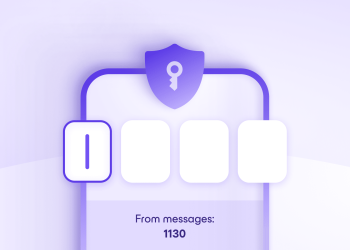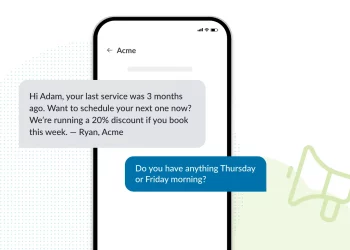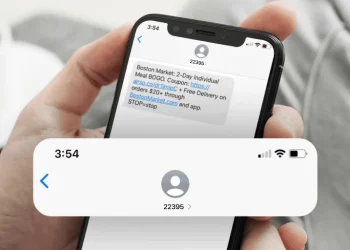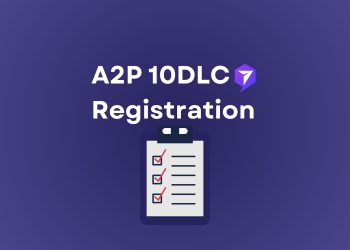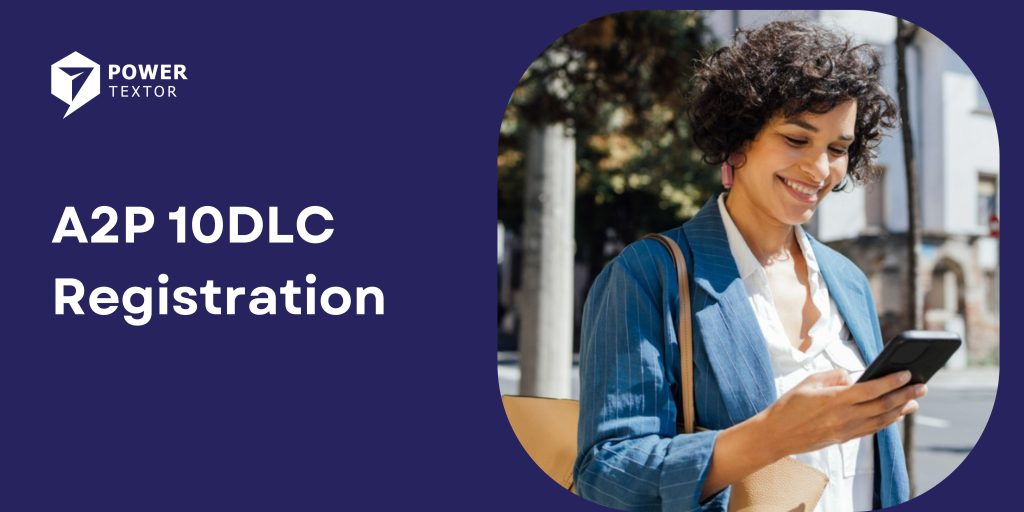
SMS and MMS messaging have become powerful tools for direct customer engagement in business communication. However, ensuring efficient and compliant message delivery remains a challenge. A2P (application-to-person) texting offers businesses a simplified solution for mass communication, reducing the burden of manual texting. However, as A2P demand intensifies, the need for more efficient, compliant, and cost-effective solutions intensifies.
Enter 10DLC. 10DLC represents the evolution of A2P messaging, a direct response to industry demands for efficiency, compliance, and cost-effectiveness. By adopting 10DLC, businesses align with a framework designed to optimize A2P messaging, resulting in enhanced reach, higher delivery rates, improved compliance, and cost savings.
Understanding the significance of 10DLC is crucial for anyone involved in business messaging. This blog post explores its vital role in the A2P communication landscape. It also highlights its direct impact on the effectiveness and compliance of messaging strategies.
Benefits of 10DLC Registration
Registering your 10DLC implies you can get more messages delivered quickly. It ensures less filtration of messages. With DLC, you can be sure that SMS messaging is a reliable platform for all businesses.
10DLC registration deadline
The deadline for 10DLC registration was August 31, 2023. Businesses were advised to complete their registration before this date. For those who couldn’t follow up on it, their message delivery from unregistered numbers was reduced.
Now that we understand that 10DLC stands for 10-digit long code phone numbers,
It means any standard phone number, for example, your business contact number or internet (VOIP), a 10DLC number. If you are a business that wants to use existing business numbers for text messaging, the 10DLC regulations apply to you.
10DLC vs shortcode numbers
10DLC numbers are more popular as businesses already own them. They cost less than other businesses. Your customers have more trust levels in 10DLC numbers than short code numbers.
With their custom recognizable digits, short code numbers are perfect for handling vast traffic, like large-scale marketing campaigns. Their high setup and maintenance costs and inability to handle phone calls often make businesses look for other options. While they support two-way messaging, their limitations and expenses often outweigh their benefits.
10DLC vs toll-free numbers
Toll-free numbers offer a cost-effective solution for two-way SMS communication in moderately high volumes. With their ability to handle thousands of messages daily at impressive throughput rates, toll-free long code numbers are well-suited for functionality and branding.
However, toll-free long code numbers require registration, and some carriers may make the process unnecessarily complex and time-consuming. To ensure a smooth and efficient registration process, choose a carrier that simplifies the steps involved in registering and verifying your numbers.
Also, toll-free numbers may appear international (non-US) to your customers, which could restrict your campaign’s engagement.
Understanding 10DLC Regulations
While various 10DLC regulations and process changes impact the telecommunications industry, let’s understand some 10DLC regulations for your business:
- Mandatory Registration: Businesses must register with The Campaign Registry to utilize 10DLC services.
- Opt-In Compliance: You must ensure that your contacts have explicitly agreed to receive text messages from your business.
- Industry Restrictions: Businesses operating in specific industries, such as cannabis/hemp, firearms, third-party collections, payday loans, and illicit materials, may be ineligible for 10DLC services.
- Additional Fees: Be prepared for new 10DLC and per-message fees that apply to all businesses, not just those using Power Textor.


